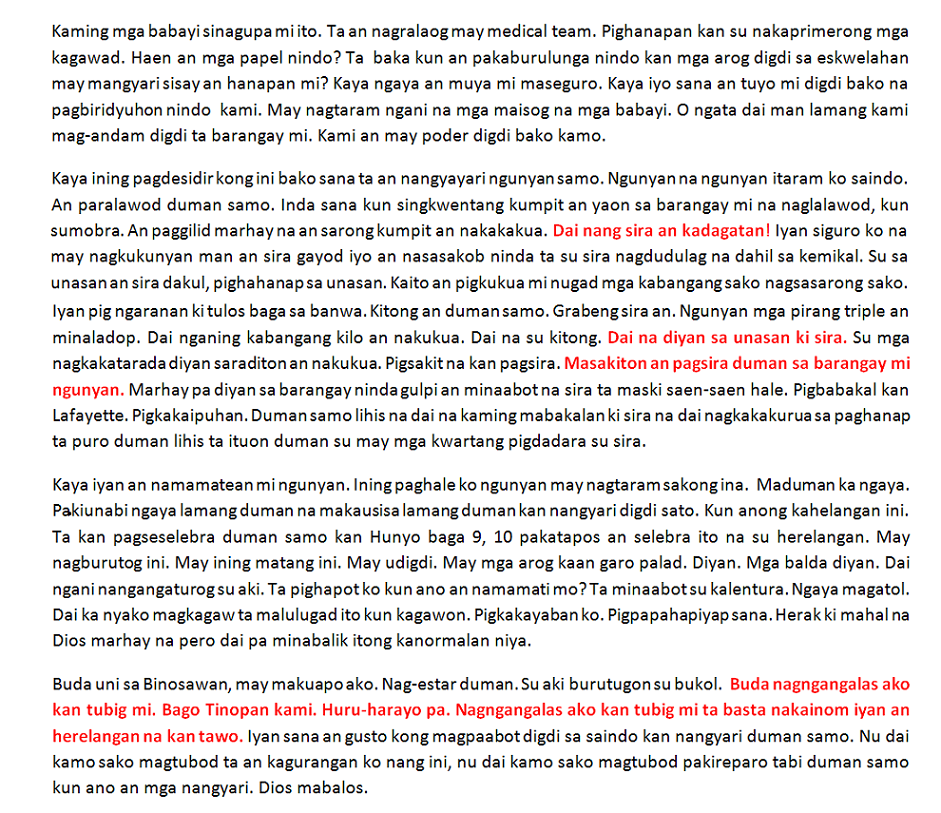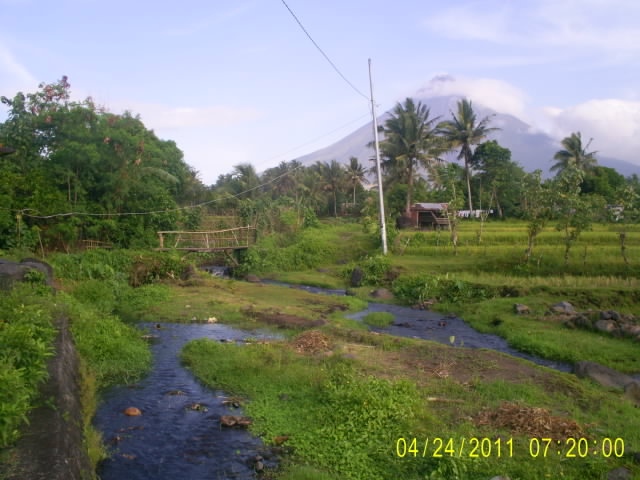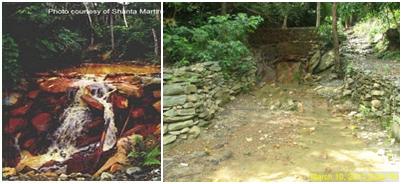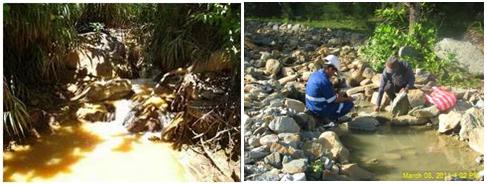A rather interesting "strategic document" at the basis of the Chamber of Mines attempts to Improve Transparency of Payments and Receipts in the Mining Industry. Read on and let your diligence be rewarded.
Technical Report
Improving Transparency of Payments and
Receipts in the Mining Industry
by Nelia Halcon, Team Leader, Ed Coronel, and
R.S. Bernaldo and Associates
Prepared for Chamber of Mines of the Philippines
Submitted for review to
USAID/Philippines OEDG
July 2007
Economic Modernization through Efficient Reforms and Governance Enhancement (EMERGE)
FINAL REPORT
IMPROVING TRANSPARENCY OF PAYMENTS AND
RECEIPTS IN THE MINING INDUSTRY
Executive Summary
The emergence of mining as one of the major drivers of the Philippine economy at the turn of the twentieth century has prompted industry stakeholders to evaluate the means of reforming a sector that is continuously beleaguered by a plethora of controversies despite exhibiting potentially large economic and social returns to local communities.
The Philippine mining industry and localized governance
Revitalizing the mining industry requires a substantial consideration of the growing role of local government units in resource planning and management in order to address their distinct development issues. One manifestation of this trend is the proposed General Appropriations Act (GAA) of 2006 which incorporates a provision that allows mining companies to directly pay the local government units (LGUs) in mining areas their share of taxes. Ideally, the provision will facilitate LGU access to these revenues, allowing them to initiate programs benefiting local communities. However, these payments are highly vulnerable to abuse due to the absence of an appropriate mechanism for the public disclosure of large potential payments from mining companies and the utilization of mining taxes by LGUs. This is currently the main threat to reforms introduced in the industry. Estimates show that on an annual basis, mining revenues may reach up to US$1.2 billion.
Industry reforms and pilot project
To achieve greater accountability and transparency in the industry, the Chamber of Mines of the Philippines is spearheading the adoption of the Extractive Industry Transparency Initiative (EITI)[1], an implementing system that institutionalizes a mechanism of disclosure from both mining companies and their host governments of the legitimate payments the former make to the latter.
A technical assistance for a pilot project was provided by EMERGE for the improvement of transparency of payments and receipts of mining taxes and other payments. The project’s objectives were: (1) to develop a template for conducting an EITI-aligned audit of tax payments by mining companies; and (2) to stimulate the audit and reporting process for a single mining operation. The Philex Mining Company’s Padcal mines in Itogon, Benguet and the Rio Tuba Nickel Mining Company’s operations in Bataraza, Palawan were selected as subjects. Both companies are home-grown, hence, unrestricted by any influence or pressure from a foreign partner or majority owner.
The project was implemented in two phases. The first entailed the development of a reporting template and audit plan in agreement with the mining company, the LGU, the national government[2] and where necessary, the civil society. The reporting template and audit plan attempted to: (1) investigate the existence and role of all financial payments required by the Mining Law and its Revised Implementing Rules and Regulations (IRR)[3] and (2) incorporate all benefit streams from the mining operation including payments made to the national and local governments and other Filipinos. The second phase involved the preparation of reports, reconciliation of company submissions with the government submissions, and analysis of information with regard to any gaps and discrepancies. A series of public consultations were held in the capital of Benguet and Palawan and were attended by the host LGUs and officials of the subject mining companies.
Marketing the EITI
The main issue that surfaced during the project implementation was crafting a marketing program founded on incentives that would convince companies and governments to commit to the practice.
The EITI’s success would largely depend on what it can offer for the parties involved – what’s in it for mining companies, LGUs, the National Government and civil society. Once the answers are firmed, the actual promotion, selling, testing, expanding and refining of the EITI’s processes and procedures will logically follow.
The following factors are vital in effectively marketing EITI:
1. Product Positioning. Requires strategic positioning vis-à-vis the needs of its target market arising from the distinct nature of the industry.
a. Demand - what is it responding to and who should be spearheading its promotion?
b. Transparency - as a “transparency” product, correct incentives must be given to companies to transform their defensive position into a public relations value.
c. Governance - as a governance tool of mining companies adhering to global standards within an environment of government regulatory agencies saddled with corruption reaching up to levels of institutionalized rent-seeking politics.
d. Industry segmentation - recognition of the industry’s segmentation (the big players, the “juniors”[4], the cross-over “juniors”[5] and the home-grown mining companies) and articulating the incentives corresponding to their distinct behaviour.
2. Price. Includes weighing the cost-benefit implications of doing the process and the actual cost of committing to the EITI.
3. Promotion. Clear communication of the EITI’s goals and objectives as well as the benefits and responsibilities that come along with the commitment to the process.
4. Place. Setting a clear set of procedures for companies undergoing an EITI audit.
Other Issues
There were also issues encountered during the pilot project’s implementation that may require administrative and pseudo-legislative actions. These issues include:
1. LGUs deprived from accessing to their “rightful share” from the company’s operations due to delayed releases of LGU allocations;
2. Tension between LGUs and medium to large-scale mining operations again due to the delayed release of LGU shares from the national government;
3. LGU-led promotion of the process;
4. Inclusion of an assessment as to whether mining-related revenues are actually utilized for what they are intended;
5. Emergence of other needs of stakeholders’ that the EITI may need to focus on; and
6. Utilizing the EITI as a government response to evaluating the effectiveness of a designated fiscal regime.
Recommendations
The EITI can play an integral role in revitalizing the Philippine mining industry. The pilot project was an exercise that allowed the prioritization of issues in order to refine the EITI and look at the possibility of expanding its capacity to address other concerns of industry stakeholders. There are seven broad areas that need attention in packaging a Philippine-adapted EITI process:
a. For product positioning, it is recommended that the EITI should be marketed as a voluntary initiative of the mining or resources industry but having the recognition by government as a seal of good housekeeping.
b. For promotion and expansion
§ package EITI adaptation in the Philippines as a joint government, NGO and private sector initiative by formulating the processes and instruments of a local EITI initiative through a consultative process involving key stakeholders; and
§ manage the initiative via a dedicated private sector Secretariat advised by a joint Government-NGO-Industry EITI Advisory Council
c. For improving national government releases to LGUs, the Department of Budget and Management (DBM) must observe the law mandating the automatic release of LGU share in taxes collected from national wealth.
d. For LGU capacity-building, they need to acquire training and the development of skills necessary to assess the proper taxes particularly those covered by real property tax.
e. For ensuring transparency on taxes paid and collection, a body must be created with the authority to examine the production report of the mining companies and at the same time review the books of the LGU on how they accounted for the receipt of their share.
f. For the growing demand to assess the real impact of mining payments, funding for mitigating measures and community development expenditures must also increase.
g. The effectiveness of the different monitoring mechanisms institutionalized by the Mining Act of 1995 must be measured to initially establish benchmarks and identify practical targets for companies and their host communities to commonly agree to.
[1] An initiative of UK Prime Minister Tony Blair, launched at the World Summit on Sustainable Development in Johannesburg in September 2002.
[2] Primarily the Department of Environment and Natural Resources/Mines and Geosciences Bureau and Department of Finance
[3] Contingent Liability and Rehabilitation Fund (CLRF) and its Technical Working Group, Rehabilitation Cash Fund (RCF), Monitoring Trust Fund (MTF), Environmental Trust Fund (ETF) and Social Development and Management Program (SDMP)
[4] Considered the “lifeblood” of the mining industry, the “juniors” are exploration companies that are born every time a group of investors launch for listing an exploration property in a remote location. A majority of their funding are sourced through the stock market.
[5] Evolution of a company from exploration to operation.
































































































































No comments:
Post a Comment